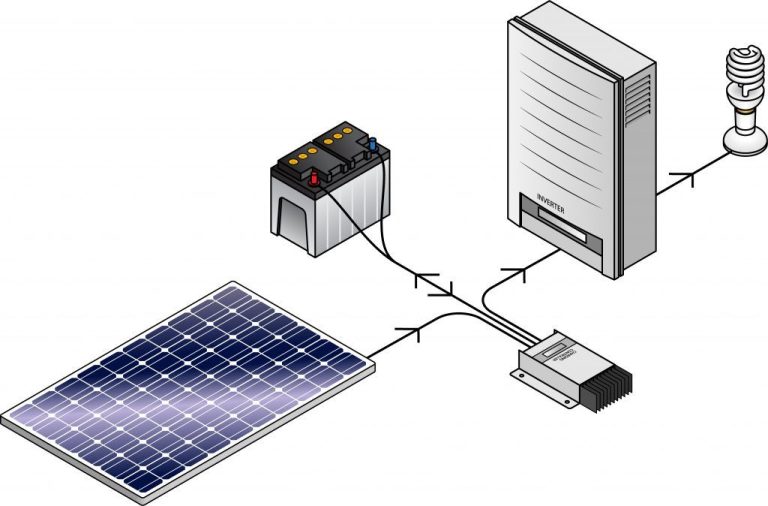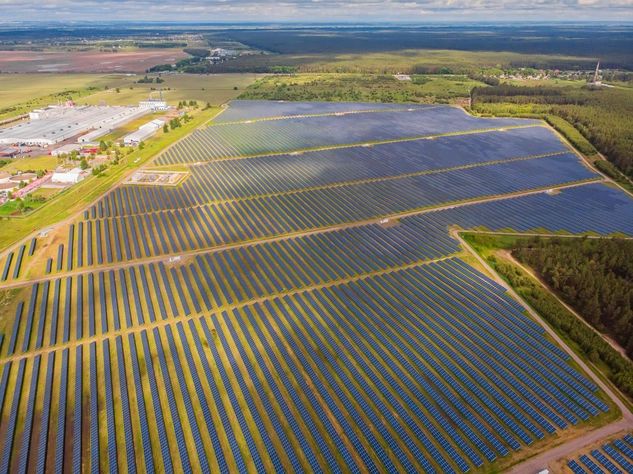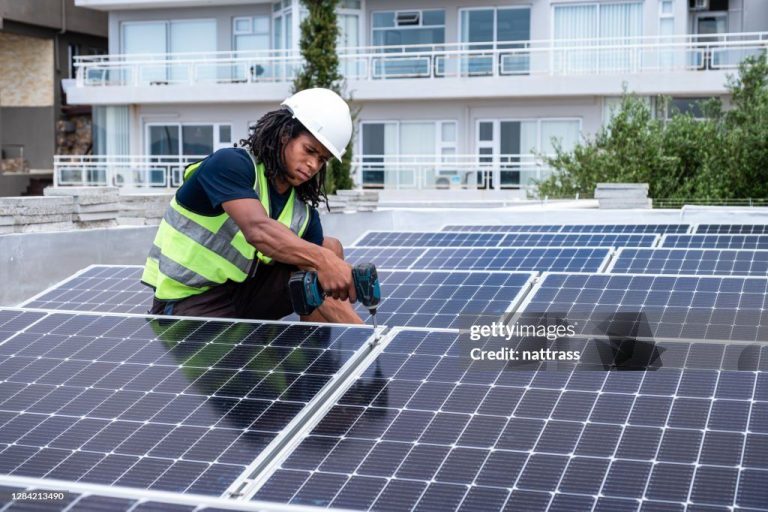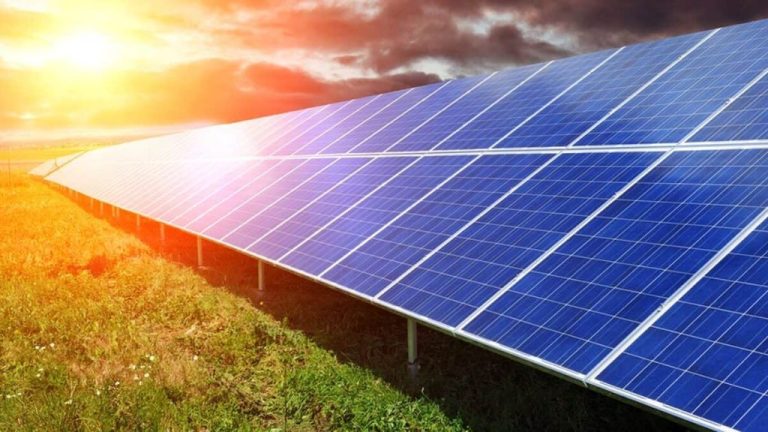Can 10 Solar Panels Power A House?
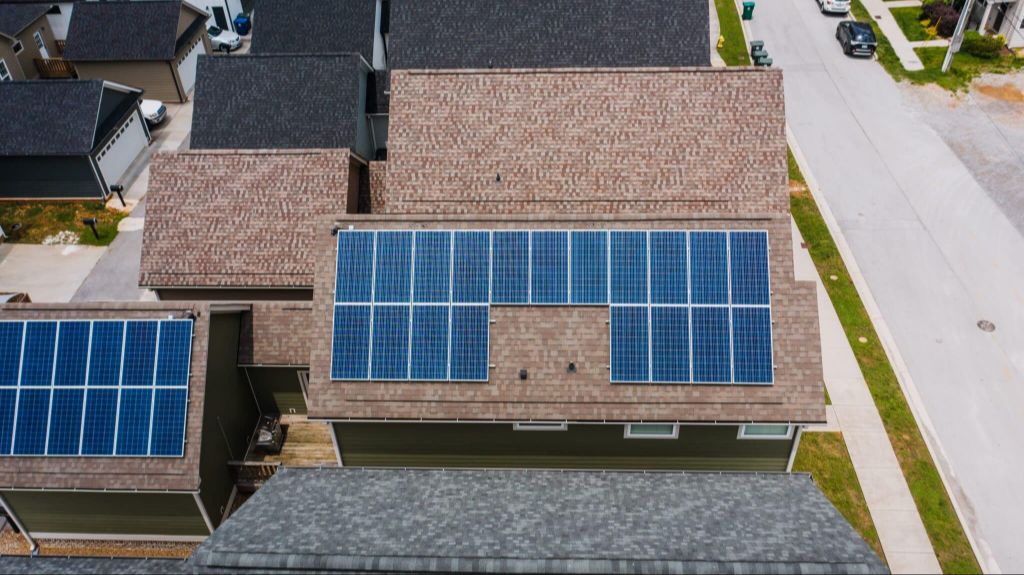
The question of whether 10 solar panels can power a house does not have a simple yes or no answer. It depends on several key factors including the size and energy usage of the house, the efficiency of the solar panels, and the amount of sunlight available based on geographic location. In this article, we will explore these variables in depth to determine if and when 10 solar panels would be sufficient to fully power a residential home.
We will begin by looking at typical household energy consumption to set a benchmark for how much electricity the average home requires. Next, we will examine solar panel efficiency ratings to understand how much power modern panels can produce. Using real-world examples, we will then calculate the number of solar panels needed based on home energy use and location. Additional considerations around battery storage, grid parity, and costs will also be addressed.
By the end, you will have a detailed understanding of the considerations involved in powering a home with solar. Although there is no universal answer, this analysis aims to provide the key information you need to determine if 10 solar panels can meet the energy demands of your specific home.
Typical Household Energy Usage
The average U.S. household consumes about 900 kWh of electricity per month, which adds up to around 10,800 kWh per year. This can vary considerably based on the size of the home, number of residents, appliances used, and climate location. Larger homes with larger families tend to use more electricity on a daily basis. Areas with hotter climates may also have higher electricity usage for air conditioning in the summer months.
According to the EIA, the average annual electricity consumption for U.S. residential utility customers in 2020 was 10,715 kWh. The average home consumes about 30 kWh of electricity per day. However, consumption patterns follow a distinct seasonal pattern. In summer months, daily electricity consumption can exceed 50 kWh on the hottest days when air conditioning use is high.
Solar Panel Efficiency
The typical efficiency rating of residential solar panels is between 11-15% (1). This efficiency rating measures what percentage of sunlight hitting the solar panel gets converted into usable electricity. While 11-15% may seem low, it is sufficient to produce ample electricity from sunlight for residential needs. The most common type of solar panels for homes are monocrystalline and polycrystalline silicon panels, which have average efficiency ratings of 15-20% and 13-16% respectively (2).
There are other emerging solar panel technologies that can achieve higher efficiency ratings of 20-30%, such as gallium arsenide multijunction cells. However, these are much more expensive and not commonly used for residential installations. The balance between efficiency, cost, and production scale makes standard silicon panels the predominant choice today.
Sources:
(1) https://www.ecoaltenergy.com/faq.html
(2) https://www.pursolaraz.com/solar/what-affects-solar-panel-efficiency/
Solar Irradiation by Location
The amount of solar irradiation available varies significantly by location across the United States. According to data from the National Renewable Energy Laboratory (NREL), parts of the Southwest like Arizona, Nevada, New Mexico, and California have the highest annual solar irradiation.[1] States in the Southeast region, such as Florida, also receive abundant sunshine and solar energy potential. In contrast, the Northwest and New England regions have lower solar irradiation levels.
NREL provides detailed solar resource maps showing the average daily total solar resource available across the country. These maps illustrate the wide variation in solar energy potential based on geographic location. When determining the number of solar panels needed to power a home, the solar irradiation levels for the local area must be taken into account.
In general, regions with higher annual solar irradiation will require fewer solar panels to meet household energy needs. However, even in lower solar irradiation areas, homes can still potentially be powered by solar panels if adequately sized for the available sunlight.
Putting It Together
There are several real-world case studies that demonstrate how many solar panels are needed to power homes of different sizes and locations. According to one case study from SolarCraft, a 5,000 square foot home in California with high energy needs required a 20kW solar system with 66 panels to offset 100% of the home’s energy usage (Solarcraft.com). The homeowner saw immediate savings on their energy bill. Another case study from EcoPlaneta looked at a 2,200 square foot home in Florida. With moderate energy needs, this home required 14 solar panels rated at 320W each for a 4.5kW system. This covered about 90% of the home’s energy usage. In Arizona, a study found that a 1,500 square foot home with low energy needs could be fully powered by a 3kW solar system with just 10 panels. The key variables are the size of the home, energy efficiency, and the solar irradiation available by geographic location.
In summary, case studies show that solar can fully power homes of various sizes, with the number of panels needed scaling up with larger home footprints and increased energy usage (Solarcraft.com, Ecoplaneta.com). Efficient homes in high solar resource areas like the Southwest may need as few as 10 panels, while larger inefficient homes can require 60+ panels. Location andefficiency are key factors determining solar panel needs for residential power.
Other Considerations
There are a few other important factors to consider when determining if 10 solar panels can power a house.
Battery Storage
Solar panels only produce energy when the sun is shining. To store excess energy for use at night or on cloudy days, most solar systems utilize batteries. The size and number of batteries needed depends on the home’s energy usage and desired backup capacity. Typically, each 100Ah 12V battery can store 1.2kWh of energy 1.
Net Metering
With net metering, any excess solar energy produced is sent back to the grid and the homeowner receives a credit from their utility company. This helps offset the cost of grid-supplied electricity used at night or on low solar production days. Net metering policies, compensation rates, and program caps vary significantly by location 2.
Time-of-Use Rates
Utilities often charge higher rates during peak usage hours, usually midday. Solar panels produce the most energy during these high-cost hours, maximizing savings. However, energy usage in the morning and night will still be billed at regular rates.
Financial Analysis
The cost of a residential solar panel system can vary greatly depending on the size of the system, type of panels, location, available incentives, and installation costs. According to the National Renewable Energy Laboratory (NREL), the average cost per watt for residential systems in Q1 2022 was around $2.44 per watt. This means a typical 6 kW system would cost around $14,640 before incentives [1].
However, costs can be much lower in states with high solar incentives. For example, in California the average cost is around $2.20 per watt thanks to strong net metering policies and state rebates. With the federal solar tax credit, a California homeowner could pay around $8,800 for a 6 kW system after incentives [2].
The payback period on a solar investment varies, but is typically between 6-8 years nationwide. With high electricity rates and strong incentives, the payback period could be under 5 years in some markets. To estimate savings, it’s important to calculate your annual energy usage and compare it to projected solar production.
Environmental Benefits
Installing solar panels can provide significant environmental benefits by reducing carbon emissions. According to Solar.com, residential solar panels emit around 41 grams of CO2 equivalent emissions per kilowatt-hour of electricity generated. However, since solar panels displace grid electricity that is often generated from fossil fuels, they can still result in substantial net carbon reductions [1].
One analysis from Columbia University found that solar panels in New York reduce CO2 emissions by 150-200 grams per kilowatt-hour generated, compared to grid electricity. This amounts to an annual reduction of 208-236 metric tons of CO2 per acre of solar panels installed. By comparison, an acre of trees only reduces around 1 metric ton of CO2 per year [2]. Solar panels can play an important role in climate change mitigation by displacing fossil fuel use.
The carbon payback period for solar panels, or the time required to offset panel manufacturing emissions, is around 1-4 years. After this, solar panels generate clean renewable energy and avoided carbon emissions for the remainder of their 25+ year lifespan [3]. With rising concerns about climate change, the carbon reduction benefits of solar power make it an attractive option for many homeowners.
Conclusion
Based on the typical energy usage of a household and the factors that determine solar panel output, 10 solar panels would generally not be enough to fully power a house. The amount of electricity generated by 10 standard solar panels in optimal conditions may only cover about 30-50% of the average household’s energy needs. However, by combining solar panels with energy efficiency measures, 10 panels could potentially get a household much closer to meeting their demand through renewable generation.
In summary, key findings include:
- Average households use about 30 kWh of electricity per day.
- Standard solar panels produce around 250-300 watts each.
- 10 solar panels in ideal conditions could generate 3-5 kWh per day.
- Solar panel output varies significantly by location and weather.
- Energy efficient appliances and proper insulation help reduce household usage.
- Financial incentives can improve solar panel return on investment.
- Solar energy reduces fossil fuel dependence and emissions.
While 10 panels alone cannot power an entire house, they can offset a portion of grid electricity usage. With efficient energy use and storage, a solar PV system gets us closer to self-sufficiency.
Further Reading
If you found this article helpful and are looking for additional resources on powering your home with solar panels, here are some suggestions for next steps:
- Link to Solar Calculator – Use this tool to get a personalized estimate for how many solar panels you need based on your location and energy usage.
- Link to In-Depth Solar Guide – This comprehensive guide from [Source] covers everything you need to know about home solar systems.
- Link to Solar Reviews – Read unbiased solar panel reviews from real homeowners to find the best panels and installers for your needs.
- Link to Video Solar Tutorial – Watch this step-by-step video tutorial that shows the complete process for installing and setting up solar panels.
With the right information and planning, powering your home with solar energy is more accessible than ever. The resources above will help you evaluate if solar is right for you and walk you through the installation process.

